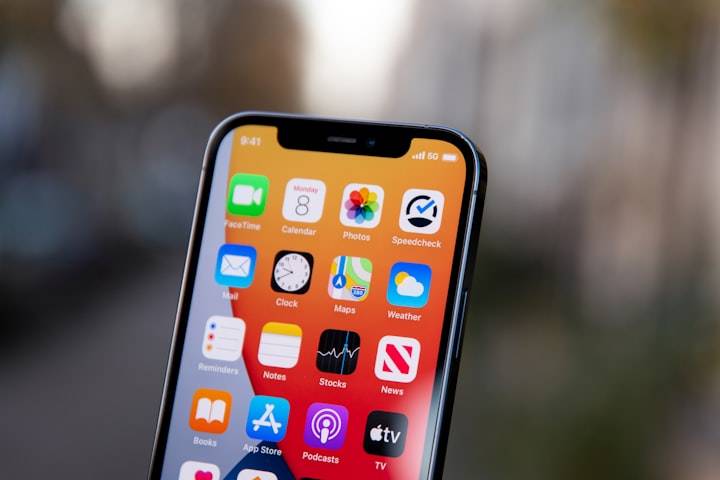Introduction to 5G Technology
The world of education is evolving at an unprecedented pace, and mobile learning is at the forefront of this transformation. With advances in technology reshaping how we acquire knowledge, 5G technology emerges as a great changer. Imagine accessing a wealth of information instantly or engaging with immersive content seamlessly on your mobile device. The possibilities are endless! As educators and learners embrace this shift, understanding how 5G can enhance mobile learning becomes essential. Let’s dive into the exciting ways this powerful technology will shape the future of eLearning and educational experiences worldwide.
Benefits of 5G in Mobile Learning

5G technology revolutionizes mobile learning by providing faster internet speeds. This means students can access educational resources with minimal lag time. Instant downloads make studying more efficient.
With lower latency, real-time interactions become seamless. Virtual classrooms flourish as learners connect without annoying interruptions. Live discussions and Q&A sessions enhance engagement.
Moreover, 5G supports high-quality video streaming for immersive content delivery. Students can watch lectures or tutorials in stunning resolution on their devices, making complex topics easier to grasp.
In addition, the increased capacity allows multiple users to share a network without sacrificing performance. This is vital for collaborative projects where teamwork is essential.
The ability to integrate augmented reality (AR) and virtual reality (VR) applications into lessons opens new doors for experiential learning opportunities that were previously unimaginable.
Increased Connectivity and Access to Information
5G technology is revolutionizing mobile learning by providing unparalleled connectivity. With lightning-fast internet speeds, students can access a wealth of information instantly. This means no more waiting for pages to load or buffering videos.
Imagine being in a remote area and still having access to the latest research, online courses, or educational videos right at your fingertips. It's like carrying an entire library in your pocket.
This increased connectivity allows learners from all backgrounds to engage with diverse content. Whether it's connecting with peers worldwide or accessing specialized resources, the possibilities are endless.
Moreover, 5G's low latency ensures that real-time interactions occur seamlessly. Students can participate in live discussions and collaborate on projects without delays hindering their experience.
This shift empowers individuals to pursue knowledge wherever they are — transforming education into a truly global endeavor.
Enhanced Interactive Learning Experience
The advent of 5G technology is set to transform the landscape of mobile learning, particularly through enhanced interactive experiences. With lightning-fast speeds and lower latency, learners can engage in real-time collaboration with peers and instructors.
Imagine participating in live virtual classrooms where students can ask questions and receive instant feedback. This immediacy fosters a more dynamic learning environment that encourages active participation.
Moreover, augmented reality (AR) and virtual reality (VR) applications become seamlessly integrated into mobile devices. Students can immerse themselves in realistic simulations that bring complex concepts to life, making lessons memorable.
Effective gamified eLearning
Gamified elements will also thrive as educators harness the power of 5G to create engaging challenges. These interactive features elevate motivation while ensuring knowledge retention remains a priority.
Such advancements redefine how educational content is delivered, paving the way for innovative approaches tailored to diverse learning styles.
Real-World Applications and Simulations
5G technology opens up exciting possibilities for real-world applications in mobile learning. Imagine students conducting virtual labs from anywhere, safely experimenting with complex scientific concepts.
With ultra-low latency, simulations become seamless and immersive. Medical students can practice surgeries using augmented reality tools that mimic actual procedures without the risks associated with live patients.
In fields like engineering, learners can explore 3D models of structures or machinery in real-time. This hands-on experience enhances understanding and retention.
Moreover, business education benefits significantly from role-playing scenarios where learners negotiate deals or manage crises through realistic simulations powered by 5G connectivity. It’s not just about theory anymore; it’s about putting knowledge into action.
These applications redefine what is possible in eLearning, providing rich experiences that traditional methods cannot match. The potential to enhance skills through practical engagement is a great-changer for both educators and learners alike.
Challenges and Limitations of 5G in Mobile Learning
While 5G technology promises to revolutionize mobile learning, it does come with its own set of challenges. One significant hurdle is the infrastructure requirement. Not all regions have reliable access to 5G networks, leaving many learners behind.
Another concern revolves around cost. Upgrading devices and ensuring compatibility can become a financial burden for educational institutions and students alike.
Moreover, the rapid pace of technological advancement often leads to concerns about data privacy and security. As more sensitive information gets transmitted over faster networks, protecting this data becomes essential.
There’s a digital divide that persists across demographics. Those without prior experience in eLearning may struggle to adapt quickly to new platforms powered by 5G capabilities, limiting inclusivity in education efforts.
The Future of Mobile Learning with 5G Technology
The future of mobile learning is poised for transformation, thanks to 5G technology. Imagine accessing educational content seamlessly, without buffering or lag. This speed unlocks a world of possibilities.
Students can engage in immersive experiences using augmented and virtual reality. Picture a biology class where learners explore the human body in 3D, enhancing comprehension like never before.
Collaboration will also reach new heights with real-time interaction between peers and educators across vast distances. Group projects could become dynamic exchanges rather than static assignments.
Furthermore, personalized learning pathways can be developed through advanced analytics powered by 5G networks. Tailored resources will meet individual needs efficiently.
As educational institutions adapt to this shift, we’ll likely see innovative approaches that redefine how knowledge is shared and consumed globally. The potential for interactive apps and gamified lessons expands endlessly within this high-speed framework.
Conclusion
As real-world applications become more prevalent through virtual simulations, students can immerse themselves in their studies like never before. While challenges remain—such as infrastructure costs and device compatibility—the potential benefits far outweigh these hurdles.
Mobile learning continues to evolve, driven by innovations in technology. As we embrace the capabilities that 5G has to offer, the future of eLearning looks promising. The integration of this powerful network will shape how knowledge is shared and acquired across the globe. Embracing these changes may lead us into an era where education knows no boundaries, paving the way for a smarter tomorrow filled with opportunities for all learners.


